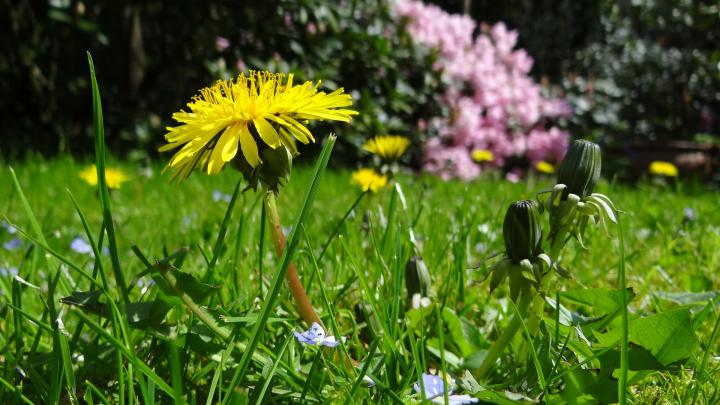






Weeds can be quite a nuisance in the garden, so here are some techniques for ridding your garden of these problematic plants.
Mulch:
Mulch is a covering that blocks daylight and inhibits growth under it. Cover the soil between your plants and along rows. Keep the mulch a few inches from the base of your plants to also discourage insect invasions. For mulch, you can use materials such as wheat straw, shredded leaves, or other organic matter. Layer it on the ground about 2 inches thick.
For persistent or numerous weeds, try covering the area with dampened newspaper (black ink only) and then cover with 2 inches of mulch. Around the bases of trees and shrubs, consider covering the ground with landscape fabric and then mulch.
Cover Crop:
In some situations, you can use a cover crop to block weeds. See our list of cover crops suitable for growing in various regions of the U.S. and Canada.
Pull:
For better or worse, you need to manually pull out most weeds. Wear waterproof gloves and consider a comfortable sitting pad for extensive weeding. The trick to pulling weeds is to get the root out as well. Weeds will slide out of the soil easier when the soil is wet—and when the weeds are young. Pull the weed from its base (close to the soil line); if you miss the root, try using a fork to gently pry the plant out of the ground, roots and all.
See our list of common weeds to help identify what’s growing in your garden.
Dig:
If your weeds regrow, then you have a persistent root that you need to dig out. Use a spade or digging fork to dig up persistent weeds by the roots. Remove as many root pieces as you can.
While weeding, hold the trowel vertically (like a child holding a crayon) to eliminate strain on your wrist.
Chop:
If digging out weeds is difficult for you, at least resolve to keep them from setting seed. Chop off their heads once a week!
Minimize Soil Disruption:
Gardeners used to advocate cultivation—stirring the top one or two inches of soil to damage weeds’ roots and tops, causing them to die. However, unless you are able to fully remove the roots from the soil, cultivation seems to simply expose dormant weed seeds to light and air, awakening them. It may be best to preserve the natural soil layers.
Some folks say it helps to turn your soil at night to control weeds. Research indicates that weeds may be stimulated to grow by a sudden flash of light, which is what you give them when you turn the soil over during the day. A German study concluded that by turning the soil at night, weed germination could be reduced by as much as 78 percent. You can try this method by working during a moonlit night, or at dawn or dusk.
Trim:
Keep the edges of your garden mowed; this will help prevent a weed invasion.
Close Ranks:
If your soil is rich and well tilled, plant your plants closer together. This will cut down weed growth.
Start your warm weather plants as soon as you can, to keep the soil from being bare for too long. At the end of the season, plant cover crops such as rye grass, winter wheat, or oats to prevent weeds from finding a home in your garden.
Cut Them Off at the Pass:
Encourage weeds to grow before you plant your garden. Lay sheets of clear plastic over your garden in early spring to warm up the soil and encourage weeds to germinate. Once the weeds are several inches above the soil, pull or hoe them out. Then plant your own crops.
Use Drip Irrigation:
If you can irrigate only the plants that need it, you may avoid the cultivation of weeds in unplanted areas, paths, and areas where they are not welcome.
Eat Your Weeds!
Yes, some weeds—lamb’s quarters, amaranth, purslane and others—are edible when young and tender. See our post, “Eating Weeds: Why Not?”
Copyright © www.100flowers.win Botanic Garden All Rights Reserved